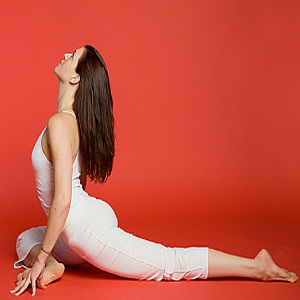 We’re back again with our Parts-is-Parts series. This month’s pain center — the hips.
We’re back again with our Parts-is-Parts series. This month’s pain center — the hips.
A majority of our clients this month have been coming in complaining of hip pain, deep in the socket, making it hard to walk and even causing pain in their sleep. Even Esther has been suffering from this affliction (though hers is the result of a horsing accident when she was 10 years old.)
Though many conditions result in hip pain, including those I’ve listed in the first aid stats below, we find that, just like the common complaints regarding hands, arms, neck, and shoulders — the hips can also take a beating from your computer. Well, not really your computer but rather as the result of all the sitting the average person is doing while working at their computers.
Common Hip Maladies
- Arthritis – Painful inflammation and stiffness of the joint and breakdown of the cartilage that normally cushions your hip bones
- Bursitis – Inflammation of the bursa (a fluid-filled sac or sac-like cavity found in places in tissues where friction would otherwise occur) that is usually due to repetitive activities that overwork or irritate the hip-joint.
- Sciatica – refers to pain, weakness, numbness, or tingling in the leg. It is caused by injury to or pressure on the sciatic nerve.
- Tendonitis – Inflammation of the tendons in the hip-joint, also caused by overworking and repetitive use.
- Fracture – A crack or break in the hip-joint. Most fractures require surgery to repair when the bone moves and can cause more damage to the joint. With almost all of these conditions weight has an effect, the more you carry the more the joint has to carry.
 Hip Pain and Massage
Hip Pain and Massage
Hip pain is often more prevalent at night, waking you as you roll over or move in any way that strains the joint, but some other activities such as climbing stairs and walking for long distances can also cause it to hurt.
This tension and inflammation can also cause a tightening of the muscles in your low back and behind. The inflammation in the joint can be alleviated with an over-the-counter anti-inflammatory medication (such as ibuprofen) or homeopathic remedies (such as Arnica Montana), when used in combination with rest and massage.
So what can massage do to help alleviate the pain in your hips? Massage opens and releases the lactic acid that accumulates in the tissue when it is less mobile. It also brings circulation to the joint, to help move out the extra fluid that builds up in the inflammatory process.
 What YOU Can Do about Hip Pain
What YOU Can Do about Hip Pain
Many of us experience pain in our hips as the result of sitting long hours with little to no movement or due to a degenerative disease or hip injury. In all of these cases, the recommendations below, when done properly, will help to increase hip mobility, decrease inflammation and pain and let you contribute more fully to your healing process.
- Exercise: Stopping that excess lactic acid from building up in the first place is key.
- Reduce Excess Weight: Extra pounds mean extra pressure on your joints — reduce the weight, reduce the pressure.
- Take Breaks from sitting long periods, getting up to stretch and walk.
- Massage: Let us help you get more mobility by moving the lactic acid out of those joints.
- A Good Quality Chair: If your job requires sitting all day, be sure you invest in a seat that will support your back and hips well and aid in maintaining your body’s overall circulation while you’re sitting — in between those mobility breaks, of course!
- You know this one — Plenty of Water. Water fuels your body, hydrating your system and helping the body to remove harmful toxins and carry out the excess lactic acid you just broke up with exercise and massage.
 A Fresh Approach to Hip Pain
A Fresh Approach to Hip Pain
As part of our ongoing commitment to our clients well-being, we’ve been taking a course that includes mobilization of the joints, to help with mobility in general.
The idea is that as the pain grows, so does our tendency to favor a painful joint, throwing the rest of our body off center. By mobilizing the entire joint, you create a new pathway and release the accumulated fluid, allowing for much easier movement.

As we practiced this new technique on the hips, we were surprised to find that, not only, were the gluteal muscles sore and tender, but so were the quadriceps and hamstrings, as well as the groin muscles.
By applying gentle but firm pressure to the ligaments and muscles of an extended joint, it both releases the muscles and opens up the joint. It’s amazing just how much better you feel after just one treatment, and we’re continuing to treat Esther’s hips to return them to full mobility.
We’ve been employing this new technique on almost all our patients who have pain in the hip joint — with great results. Even those with hip replacements can experience relief after treatment.
If you have hip pain and you’d like to work on greater hip mobility and decreased pain, contact us to schedule an appointment.




One thought on “Quick Relief for Hip Pain”
When cycling I have a problem of lactic acid build up in the hip area. What is the best way to get the acid out of that area when riding